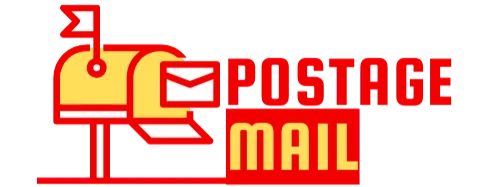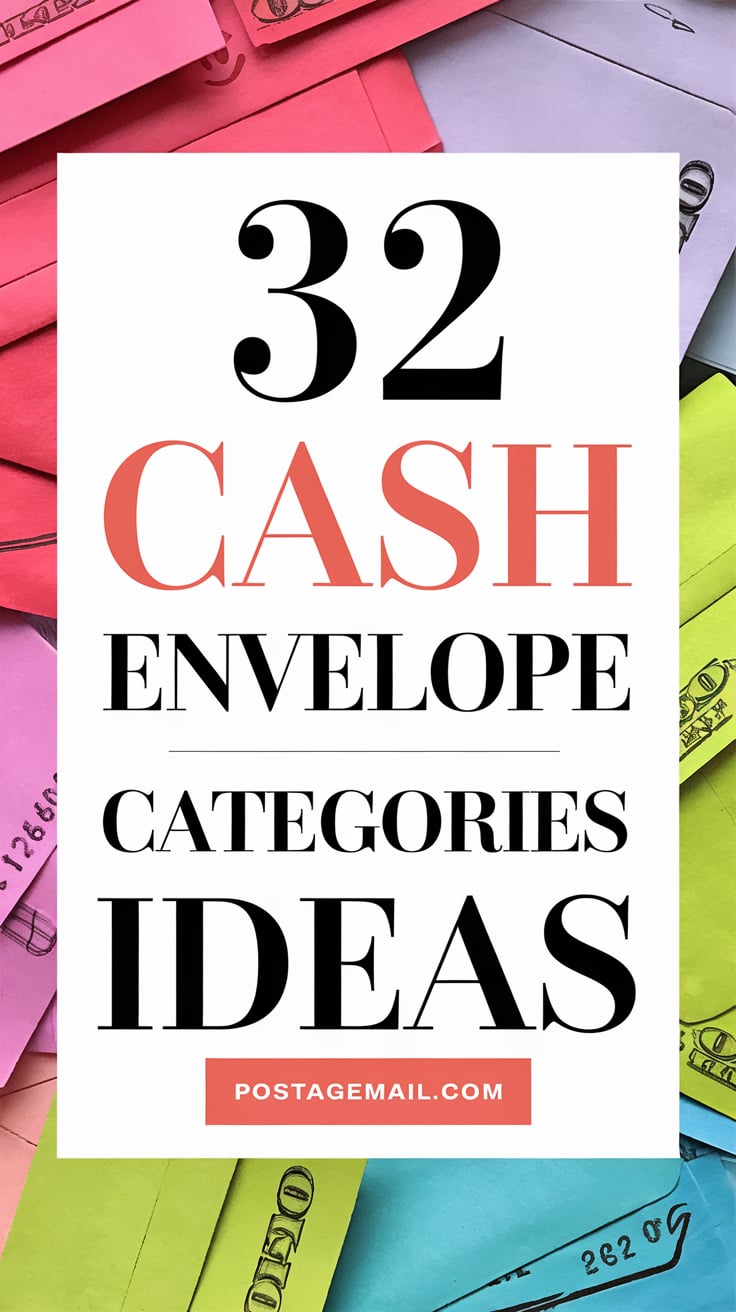This simple system will help you keep track of your spending and finally get your finances in order.
One of the most popular methods for people looking to manage their finances is budgeting with cash envelopes. It’s a straightforward approach that can help you stay on top of your spending and avoid unnecessary debt.
- What is Cash Envelope Budgeting?
- Why Use a Cash Envelope Budget?
- Organizing Your Money Envelopes
- Benefits of Cash Envelope Budgeting
- Best Cash Envelope Categories
- 1. Food and Groceries
- 2. Restaurants and Takeout
- 3. Utilities
- 4. Rent/Housing Payments
- 5. Transportation
- 6. Childcare
- 7. Household Supplies
- 8. Personal Care
- 9. Pet Envelope
- 10. Entertainment
- 11. Clothing
- 12. Footwear
- 13. Furnishings and Home Accessories
- 14. Medical Expenses
- 15. School Tuition
- 16. Phone Bills and Internet
- 17. Auto Maintenance Budget Envelope
- 18. Auto Insurance
- 19. Gym Membership
- 20. Alcohol
- 21. Kids
- 22. Lawn & Garden
- 23. Date Nights
- 24. Gifts – Christmas, Birthdays, and More
- 25. Hobbies
- 26. Savings with the 100 Envelope Challenge
- 27. Credit Card Payments
- 28. Vacation Savings Account
- 29. Starbucks
- 30. Blow Money or Fun Money
- 31. Charitable Giving
- 32. Miscellaneous Expenses
- Apps to Help With Cash Envelope Budgeting
- Frequently Asked Questions
- Which Cash Envelope Categories Will You Use?
- Share This With Others
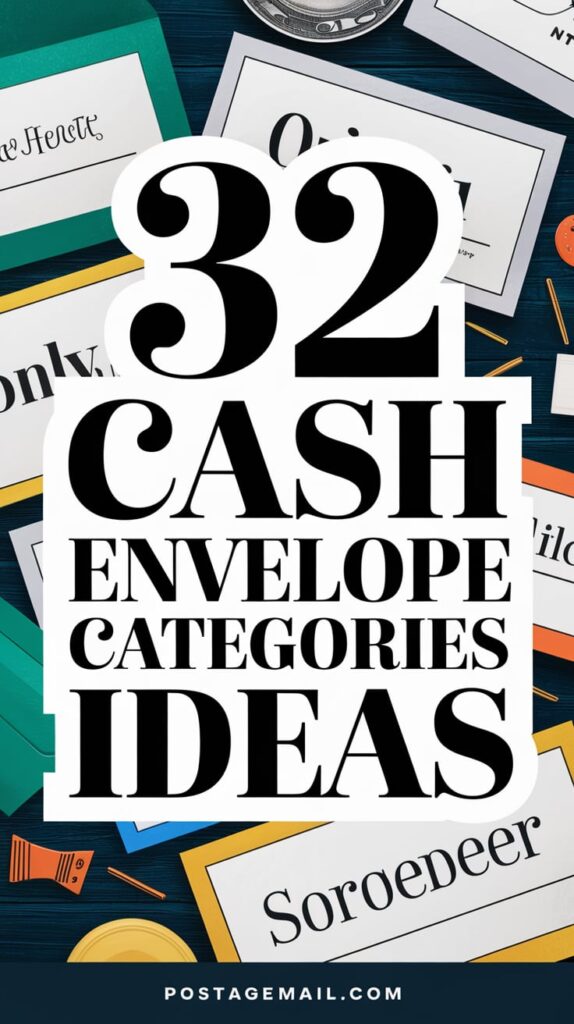
What is Cash Envelope Budgeting?
Cash envelope budgeting is a method where you allocate cash into separate envelopes, each representing a specific budget category. These categories could be anything from groceries to gas or household items. Once you’ve filled each envelope with the designated amount of cash for the month, you use only that cash to cover expenses in that category. This helps prevent overspending because once the cash is gone, you can’t spend any more in that category until the next budgeting period.
Why Use a Cash Envelope Budget?
Cash envelope budgeting can make managing your money easier and more efficient. It provides a visual way to track your spending and helps you stick to your financial goals.
This method also helps reduce impulse spending because you can only spend what’s available in the envelope for each category. It encourages mindful purchasing since you can clearly see how much money is left in each envelope, making it easier to stay within your budget.
By using this system, you can eliminate the stress of worrying about your finances and start saving effortlessly, all while enjoying guilt-free spending within your set budget.
Organizing Your Money Envelopes
Organizing your cash envelopes is simple, and it can be a great way to stay on top of your finances. Here’s how to do it:
- Choose Your Categories – Decide how many envelopes you need and which categories to use. Some popular categories include groceries, gas, and entertainment.
- Withdraw Cash – When you receive your income (either bi-weekly or monthly), withdraw the corresponding amount of cash and stuff the envelopes.
- Label Your Envelopes – Clearly label each envelope with its category (e.g., “Groceries,” “Gas,” etc.).
- Take Envelopes With You – When you go out, only take the envelopes with the money you plan to spend.
- Stay Accountable – Track your spending and make sure to replenish the envelopes if needed before the next paycheck.
- Get Creative – Consider investing in a cash envelope wallet or budget binder with clear plastic envelopes to help keep things organized.
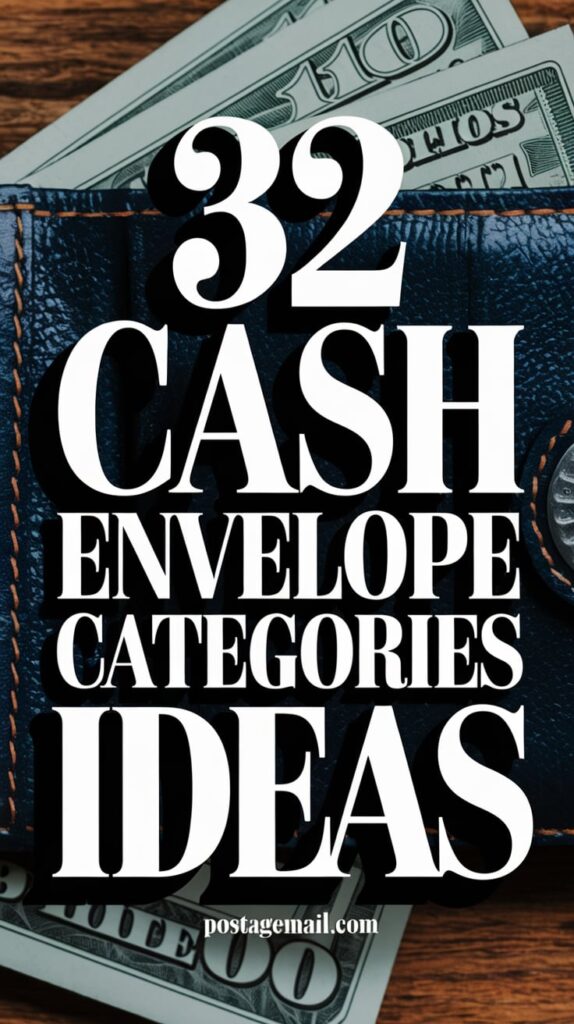
Benefits of Cash Envelope Budgeting
- Easy and efficient budgeting
- Clear tracking of spending
- Reduces impulse buying
- Tailored to your unique spending habits
- Reduces stress by keeping you informed
- Improves overall financial health
- Helps you align your spending with your goals
- Saves money by preventing unnecessary purchases
- Provides control over your finances
Best Cash Envelope Categories
To make the most out of your cash envelope system, it’s important to choose the right categories for your personal budget. Here are some of the best categories to consider for your envelopes:
- Groceries
- Gas
- Household Supplies
- Dining Out
- Entertainment
- Clothing
- Transportation
- Gifts
- Personal Care
- Medical/Healthcare
By setting up the right categories for your needs and habits, you’ll be on the right path to getting your budget under control and achieving your financial goals.
1. Food and Groceries
Groceries are a crucial budget category, especially for larger families. It’s essential to keep track of how much you’re spending in this area to stay within your budget and avoid overspending. Groceries typically include items purchased at supermarkets, warehouses, and local stores.
Some people include household supplies and personal care products in this category, while others separate those costs. You can even choose to include pet food if that’s part of your regular grocery shopping. For a helpful guide, check out this budget grocery list.
2. Restaurants and Takeout
Eating out is a great way to treat yourself or grab a quick meal, but restaurant and takeout spending can quickly add up. It’s important to be mindful of how much you’re spending in this category.
This category includes expenses for carry-out, drive-thru meals, dining in restaurants, bar hopping, fast food, and even school lunches for kids. Since restaurant expenses can spiral out of control, it’s helpful to keep track by writing down your purchases or saving receipts in an envelope.
3. Utilities
Utility bills are a necessary part of life and typically include expenses for electricity, water, gas, trash, internet, phone, cable, and streaming services like Netflix.
Utility costs can vary month to month, so you may want to consider leveling out your bills to a fixed amount with a billing plan. This helps ensure you’re not caught off guard by fluctuating expenses.
4. Rent/Housing Payments
Rent or mortgage payments are a significant part of your monthly expenses, typically taking up about 25-35% of your income. These costs are often fixed and are usually paid through bank transfer or direct debit.
Make sure to set aside a specific envelope for housing expenses to ensure these payments are always covered each month.
5. Transportation
Transportation expenses include all costs related to getting around—gas, tolls, parking, train tickets, ridesharing services, taxis, and public transportation.
Remember to adjust your transportation envelope to account for fluctuations in gas prices. It’s also wise to treat car maintenance, repairs, and registration as a sinking fund.
However, avoid including car payments in this category, as they’re a form of debt and should be handled separately.
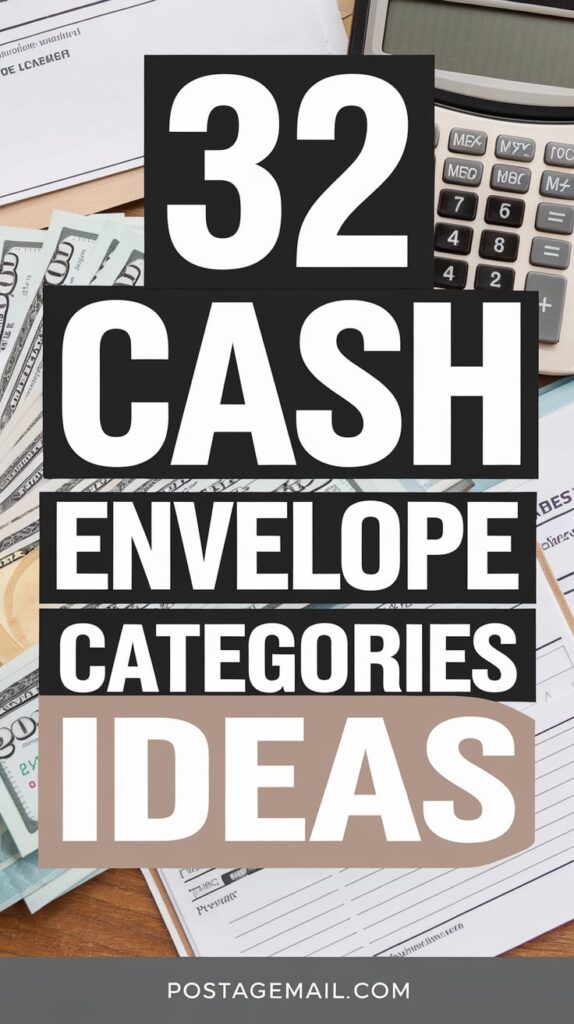
6. Childcare
Childcare is an essential service for many families, providing children with safe and educational environments. It’s a critical category for families who need flexibility for work, errands, or personal time.
Setting aside money for childcare ensures peace of mind and helps you manage these important costs without financial stress.
7. Household Supplies
Household supplies can either be grouped with groceries or treated as a separate category, depending on your preference. This includes items like home decor, cleaning supplies, organizing tools, and other household essentials.
8. Personal Care
Personal care can be broken down into several areas, and you can choose whether to include it with groceries or keep it as a separate category.
Here are a few examples:
- Toiletries: Items like toothpaste, shampoo, and soap—usually bought alongside groceries.
- Salon Services: Haircuts, massages, and manicures can be handled as a separate category.
- Beauty Products: Makeup and specialty beauty items can add up, so it’s wise to track these separately if you tend to splurge.
Having a personal care envelope helps you prioritize your needs and prevent overspending on these items.
9. Pet Envelope
Pets require ongoing care and expenses, so setting up a pet envelope is crucial for budgeting their needs. This category should cover pet food, litter, healthcare, toys, and even grooming or boarding services.
Make sure to account for both regular expenses, like food and vet visits, and irregular costs such as medications or pet-sitting fees.
10. Entertainment
Entertainment is an enjoyable part of life, but it can become costly. A dedicated entertainment envelope helps you stay within your spending limits while still having fun.
Some ideas for entertainment expenses include:
- Movies: Tickets, streaming services, and movie rentals.
- Concerts: Costs for concert tickets, associated fees, and even merchandise.
- Nights Out: Dining out, bar tabs, or other social events.
- Other Fun Activities: This could cover amusement parks, festivals, shows, and sports events.
With a separate entertainment envelope, you can enjoy fun activities without overspending.
11. Clothing
Clothing is an important budget category that requires careful attention. Without a plan, clothing expenses can quickly spiral out of control. It’s crucial to track how much you spend on clothes, as the total can easily surprise you over time.
To keep this category under control, set a specific spending limit for clothing within your budget. Don’t forget to account for additional costs like footwear, laundry, dry cleaning, alterations, and even shopping-related expenses such as taxes and shipping fees.
12. Footwear
Footwear can be included with your clothing budget, or it can be a separate category depending on your preference. When budgeting for footwear, be sure to consider the various types of shoes your family needs, including shoes, boots, sandals, sneakers, and slippers.
Also, take into account other footwear-related items such as shoelaces, insoles, and shoe care products. For formal occasions, consider setting aside funds for dress shoes or specialty shoes like those for weddings or proms.
13. Furnishings and Home Accessories
Furnishings and home accessories are essential for creating a comfortable and inviting living space. This envelope category will help you save for furniture, decor, and other accessories like tools or decorating supplies.
Whether you want to update your living room or add practical touches to your home, this category will allow you to budget for the items that turn your space into a stylish, functional home.
14. Medical Expenses
Medical expenses are often overlooked but are essential to include in your budget. Having a Health Savings Account (HSA) can make managing these costs easier.
This category covers a wide range of medical expenses, including doctor bills, hospital fees, prescriptions, vitamins, and first aid supplies. It can also include co-pays, optometrist visits, chiropractic bills, and any other out-of-pocket medical costs that arise throughout the year.
15. School Tuition
School tuition is another essential budget category, whether for private or public school. This includes the cost of enrollment, textbooks, and other school supplies, and is a fixed expense typically due before the school year begins.
Even if your child attends a public school, there are still additional expenses like field trips, enrichment programs, or camp fees that need to be considered in this envelope.
16. Phone Bills and Internet
Many people prefer to separate their phone and internet bills from their utilities because there are often opportunities to save money on these services.
Your phone bill typically includes the cost of your plan, covering data, text messages, calls, and any additional fees. Your internet bill is another essential service, and managing these costs separately from utilities can help you track and adjust your spending more effectively.
17. Auto Maintenance Budget Envelope
Setting up an auto maintenance envelope helps you proactively budget for car-related expenses. By setting aside money each month, you can be prepared for unexpected costs without dipping into emergency funds or taking out loans.
We suggest setting aside a specific amount—like $100 per month—to ensure you’re ready for any maintenance or repairs, especially if you’re driving an older vehicle that requires frequent upkeep.
18. Auto Insurance
Auto insurance is an important expense that protects you financially in the event of a car accident or damage. It covers costs such as medical bills, repairs, and even the replacement of your vehicle if it’s totaled.
Since auto insurance is often paid every six months or annually, it’s essential to set aside money each month to cover your premium. Be sure to shop around for the best coverage and premiums that suit your needs.
19. Gym Membership
The cost of a gym membership can vary widely based on factors like the type of gym, services offered, amenities included, and how often you plan to use it.
Typically, gym memberships range from as low as $10 per month to as high as $100 or more, depending on the gym and membership plan. The value of your membership should be based on what you’re getting for your money and how frequently you plan to use the facilities.
20. Alcohol
An alcohol envelope can be a helpful budgeting tool to manage your spending and consumption of alcoholic beverages. By setting aside a specific amount for alcohol-related expenses, you can avoid overspending and keep track of your alcohol budget more effectively.
21. Kids
Kids come with a lot of expenses! Budgeting for their needs includes things like clothing, school supplies, childcare, activities, and baby gear.
If your children are involved in competitive sports or extracurricular activities, it’s a good idea to create a separate category for those expenses to ensure you’re prepared for the costs that come with them.
22. Lawn & Garden
Lawn and garden maintenance is an often-overlooked expense that can quickly add up. Whether you’re buying new lawnmowers, garden tools, seeds, soil, or fertilizer, it’s essential to allocate funds for this category.
Make a list of all the products and services you typically purchase for lawn care and gardening, and set aside a reasonable amount of money each month to cover these costs.
23. Date Nights
Date nights are an important way to nurture relationships, but they don’t have to break the bank. Set a monthly budget for date nights and take only the amount of cash you plan to spend with you.
By planning ahead, you can enjoy quality time together without worrying about overspending.
24. Gifts – Christmas, Birthdays, and More
Gift-giving can be one of the trickiest expenses to plan for, but budgeting for gifts ahead of time can make it more manageable.
Set aside a little money each time you get paid for gifts like birthdays, holidays, and special occasions. This can help avoid a large financial burden around major holidays like Christmas. Additionally, consider including costs for decorations, cards, and other gift-related expenses.
25. Hobbies
Budgeting for hobbies is a great way to ensure you can enjoy the activities you love while still staying within your financial limits.
Take a structured approach to budgeting for your hobbies, and make sure to cover your mandatory expenses first. By allocating funds for hobbies in advance, you can enjoy your passions without overspending.
26. Savings with the 100 Envelope Challenge
Saving money can alleviate much of the financial stress families face. One creative way to save is through the 100 Envelope Challenge, where you allocate money to envelopes over time, eventually saving a significant amount.
Here are a few popular envelope challenges to consider:
- 100 Envelope Challenge – Save $5,050
- 50 Envelope Challenge – Save $1,275
- 200 Envelope Challenge – Save at least $5,000
These challenges make saving fun and give you a tangible way to track your progress!
27. Credit Card Payments
Using cash envelopes is a smart way to reduce credit card debt. When you budget with cash, you become more aware of your spending and are less likely to overspend in other categories. This allows you to allocate more money toward paying down credit card balances, helping you become debt-free faster.
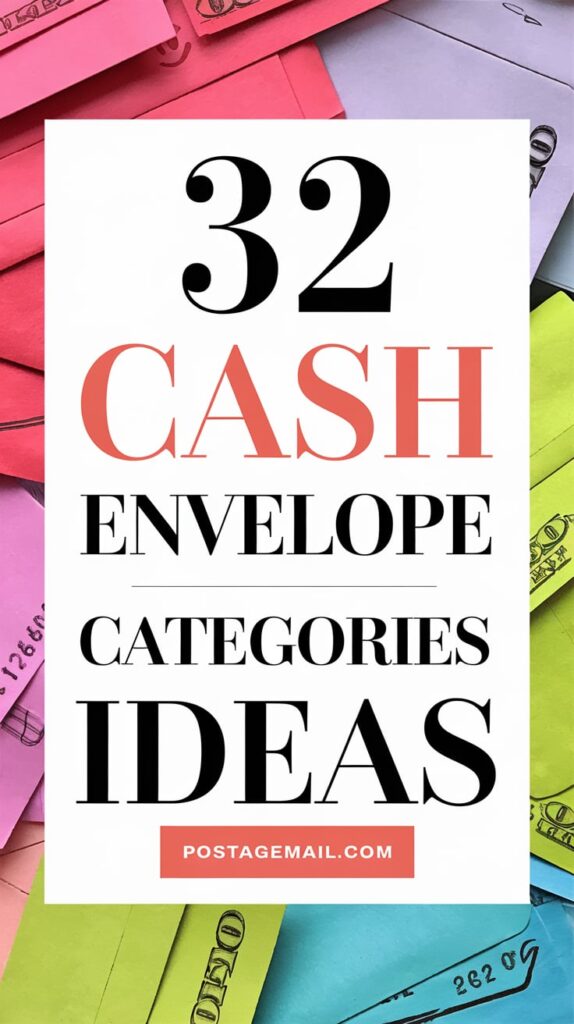
28. Vacation Savings Account
Dreaming of a vacation? A vacation savings account is a perfect way to set aside funds for that much-needed getaway. By consistently contributing to this account each month, you’ll have a dedicated fund to cover travel expenses, making your dream vacation more affordable and attainable.
29. Starbucks
If you love your weekly Starbucks fix, consider creating a cash envelope for this expense. For example, if you visit once a week and spend $5, that’s $260 a year. By setting a limit for this category, you can enjoy your coffee without overspending. Keep in mind that these small purchases can quickly add up!
30. Blow Money or Fun Money
“Blow” money, or fun money, is your allowance for spontaneous spending without a specific purpose. Whether it’s buying a coffee, a new pair of shoes, or something else, this category allows for flexibility in your budget. However, it’s important to be disciplined and only take the cash you intend to spend.
31. Charitable Giving
Incorporating charitable giving into your budget can help you stay accountable to your values. Whether you’re making tithes, donations, or small “pay-it-forward” purchases, setting aside money for charitable contributions can make a meaningful difference. Tracking this with an envelope system can help ensure you meet your giving goals and stay aligned with your priorities.
32. Miscellaneous Expenses
A miscellaneous envelope can be a lifesaver when unexpected expenses pop up. Whether it’s for lessons (e.g., music or art), bike repairs, or any other category unique to your life, this envelope gives you a cushion for unpredictable costs.
Apps to Help With Cash Envelope Budgeting
If carrying cash isn’t for you, apps are a great alternative! Some popular budgeting apps include:
- You Need A Budget (YNAB) – Create virtual envelopes and track spending
- Qube Money – Set up digital cash envelopes linked to your bank account
These apps offer the same structure as the traditional cash envelope system but without the physical cash.
Frequently Asked Questions
What Kind of Envelopes Should I Use for My Cash Envelope Budget?
It’s best to use sturdy, color-coded envelopes for easy tracking. If you’re on a budget, plain office envelopes are an economical choice. You can also use a budget binder with envelopes to keep things organized.
What Should I Do If I Overspend in One of My Cash Envelope Categories?
If you overspend, don’t worry! Here’s what you can do:
- Identify the cause of the overspending (impulse purchase or a necessary expense?).
- Cut back on other categories to compensate for the extra spending.
- Consider moving money from other envelopes if needed.
- If you’re still struggling, try finding additional income sources.
What Should I Do If I Don’t Have Enough Cash in My Envelopes?
If you run out of cash, remember: you cannot spend more than what you have. To stay accountable, track your transactions on the back of the envelope or a notecard. If you keep running low, look for areas to cut back on or find ways to earn more income.
What’s the Difference Between Cash Envelopes and Sinking Funds?
- Cash envelopes are for short-term, day-to-day expenses (e.g., groceries, entertainment, gas).
- Sinking funds are for irregular, long-term expenses (e.g., car maintenance, medical bills, or holiday gifts).
Cash envelopes cover your immediate needs, while sinking funds help you prepare for future large expenses.
Which Cash Envelope Categories Will You Use?
Starting a cash envelope system can help you take control of your spending and make saving easier. It will take a couple of months to get your system in sync, but once it’s established, you’ll see the benefits.
The key is setting up categories that match your lifestyle. Tailor your budget to fit your unique needs, and you’ll soon be on your way to better money management.
Share This With Others
Know someone who could benefit from a cash envelope system? Share this post with them! And if you have questions or need more tips, leave a comment—I’d love to continue the conversation and help you along your financial journey.
